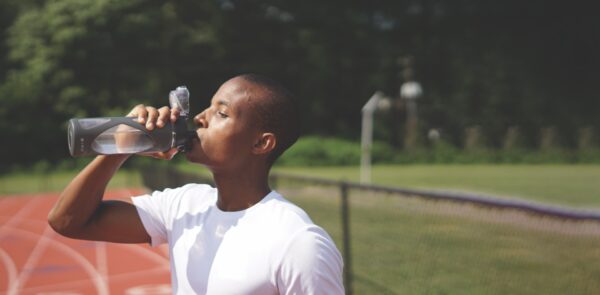Recently my grandmother was hospitalized for dehydration. I thought it was babies who were especially at risk for this problem. What are the specific risks? How much should we drink to avoid dehydration?
We are fearfully and wonderfully made, and the Creator designed marvelous systems to control body temperature, fluid balance, and the ideal pH (acid-base) environment for optimal function. The brain, kidneys, and large arteries that monitor the blood concentration and pressure contain specialized cells that stimulate our thirst and modify urinary output as needed. These mechanisms help ensure adequate intake of water to keep our bodies and minds functioning at their best.
Everyone is at risk for dehydration, but both the younger and the older populations are especially vulnerable when they experience such issues as vomiting, diarrhea, and fever. This is worsened by even helpful medications (diuretics) and comorbidity in older people. The risk for all age groups increases during hot and humid weather, especially with exercise. Prolonged heat exposure is a dangerous complication, both in sunlight or even in closed, unventilated structures in direct sun (such as parked cars and buildings with poor airflow).
Symptoms of dehydration include:
- Thirst
- Dry mouth
- Confusion
- Irritability
- Dizziness
- Deadache
- Fatigue
To prevent dehydration:
- Drink plenty of fluids and increase the amount when exercising
and exposed to heat and sunshine. - Schedule outdoor activities for the cooler parts of the day, such as
early morning and late afternoon/early evening. - Use appropriate sports drinks to help maintain electrolytes such
as potassium and sodium if engaged in rigorous exercise and
physical training programs.
How much water should we drink every day? This depends on the heat, the humidity level, and our activity. In a temperate climate environment and sedentary situation, 2.7 liters (91 fluid ounces/11 cups) for women and 3.7 liters (125 fluid ounces/16 cups) for men is a realistic goal.*
If your diet is rich in fresh fruits and vegetables, these will contribute additional hydration. As exercise, ambient temperature, and humidity increase, water consumption should increase.
Our thirst is finely tuned to prevent us from drinking too much liquid; it is overridden in very rare cases, which are usually associated with disease states.
Never ignore the amazing thirst mechanism that has been included in your nervous system. When you’re thirsty, drink—preferably water. Soda/sugary beverages count toward fluid intake but aren’t healthy choices.
It’s interesting and important to note that alcohol is dehydrating (causes fluid loss through what is called a diuretic effect), adding further woes to its use and confirming that there’s no safe level of alcohol intake.
A very helpful way of assessing whether our fluid intake is adequate is by observing the color of the urine. It should be approaching the color of clear water
or light yellow. The more dehydrated we become, the darker the urine. Some foods (such as beets), vitamin supplements, and medications may discolor the urine, but generally the lighter the color the better.
Live life to the full, drink plenty of life-giving water each day, and drink freely of the Water of Life (see John 4)!
* https://www.nationalacademies.org/news/2004/02/report-sets-dietary-intake-levels-for-water-salt-and-potassium-to-maintain-health-and-reduce-chronic-disease-risk



